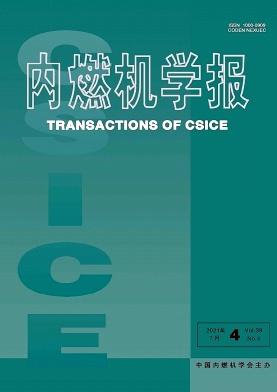MATHEMATICAL MODELING OF THE ENGINE PARAMETERS INFLUENCE ON VEHICLE ACCELERATION DYNAMICS
Q4 Engineering
引用次数: 0
Abstract
The throttle response of a vehicle determines its dynamic properties and is characterized by an acceleration time from 0 to 100 km/h. An experimental study of the influence of vehicle parameters on its throttle response is associated with significant material and labor costs. At the stage of sketching the design of the vehicle, preliminary determination of design parameters and settings, it is rational to use mathematical models. In the existing models of the vehicles movement dynamics, the engine power, as a rule, is set by empirical dependencies and does not take into account the possibility of changing its parameters and characteristics. The paper proposes a mathematical model that combines models of the engine workflow and the dynamics of vehicle acceleration. The mathematical model of the engine workflow is a quasi-stationary thermodynamic model, in which combustion is described by the Vibe equation, and heat transfer with the walls is described by the Woschni equation. To check its adequacy, an experimental study of the VAZ-2108 engine was carried out to obtain external speed, load and control characteristics. Good agreement between the calculated and experimental data is shown. Vehicle acceleration simulation was carried out according to the method of E.A. Chudakov. The parameters of the VAZ-2108 car and the resistance forces during acceleration from 0 to 100 km / h have been determined. It is shown that the car accelerates from 0 to 100 km / h in 18.3 s, which corresponds to the experimental data and indicates the adequacy of the chosen techniques. The influence of changing the parameters and settings of the engine on the dynamics of vehicle acceleration has been investigated. It is shown that in order to achieve better dynamics of motion, the cylinder diameter and compression ratio must be maximized. The ignition timing, intake valve closing angle and excess air ratio have extremes. The efficiency of using a 16-valve cylinder head instead of an 8-valve one is shown. Based on the results of the studies, it was proposed to apply a set of engine parameters, which made it possible to reduce the acceleration time of the VAZ-2108 from 18.3 s to 13.2 s. Thus, the developed mathematical model makes it possible to quantitatively evaluate the influence of engine parameters on the dynamics of vehicle acceleration, to optimize the parameters and settings of the power plant and the vehicle as a whole.发动机参数对车辆加速动力学影响的数学建模
车辆的油门响应决定了其动态特性,并以0到100公里/小时的加速时间为特征。车辆参数对油门响应影响的实验研究涉及大量的材料和人工成本。在整车设计草图阶段,初步确定设计参数和设置,采用数学模型是合理的。在现有的车辆运动动力学模型中,发动机功率通常是根据经验依赖关系设定的,没有考虑到其参数和特性变化的可能性。本文提出了发动机工作流程模型与车辆加速度动力学模型相结合的数学模型。发动机工作流程的数学模型是准稳态热力学模型,其中燃烧用Vibe方程描述,与壁面的换热用Woschni方程描述。为了验证其充分性,对VAZ-2108发动机进行了实验研究,获得了外转速、负载和控制特性。计算结果与实验结果吻合较好。根据E.A. Chudakov方法进行了车辆加速度仿真。确定了VAZ-2108汽车的参数和加速度从0到100 km / h时的阻力。结果表明,汽车在18.3 s内从0加速到100 km / h,与实验数据相符,表明所选技术的充分性。研究了改变发动机参数和设置对车辆加速度动力学的影响。结果表明,为了获得更好的运动动力学,气缸直径和压缩比必须最大化。点火正时、进气门关闭角和过量空气比均有极值。使用16阀气缸盖而不是8阀气缸盖的效率显示。在研究结果的基础上,提出采用一组发动机参数,使VAZ-2108的加速时间从18.3 s缩短到13.2 s。由此建立的数学模型可以定量评价发动机参数对整车加速度动力学的影响,从而对动力装置和整车的参数和设置进行整体优化。
本文章由计算机程序翻译,如有差异,请以英文原文为准。
求助全文
约1分钟内获得全文
求助全文

 求助内容:
求助内容: 应助结果提醒方式:
应助结果提醒方式:


